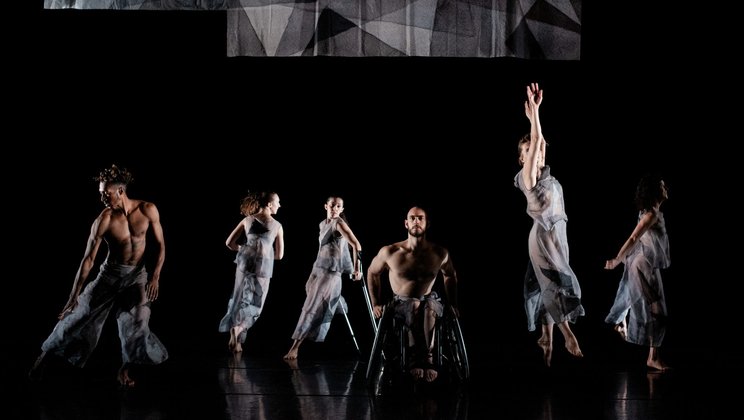Discussing Diversity with Flavia Fall
-
Kultur inklusiv / Flavia Fall
"Kultur inklusiv" by Pro Infirmis (a national umbrella organization for people with disabilities) is the special department for inclusive culture in Switzerland. They see inclusion as an added value and social process, which they help to initiate and support in the cultural sector throughout Switzerland. The heart of the department is the label "Kultur inklusiv". This label is awarded to cultural institutions that initiate and promote inclusion in their own institution or organization – together with people with disabilities and with the aim that people with disabilities participate in cultural life and help shape it.
Flavia Fall is responsible for Performing Arts in German-speaking Switzerland. She studied visual communication at the ZHdK, was the managing director of "Sensability Bern – Experts for Inclusion" for four years, and co-directed photography courses for people with cognitive impairments at the "volkshochschule plus" in Berne.
When talking about "Diversity," people mostly discuss questions of gender, or how people of different backgrounds can live together. Do you feel that inclusion of people with disabilities sometimes is left out of this discourse?
Life in a diverse society is inclusive when everyone with different preconditions and needs can participate in culture, education, work, housing, family life, and so on. For this to be possible, barriers must be removed. Removing a particular barrier usually serves multiple target groups. For example, step-free access is not only a relief for people in wheelchairs, but also for parents with children in strollers. Or simple language is better understood not only by people with cognitive disabilities, but also by foreign-language or educationally disadvantaged populations. That is why I think the idea that we think of inclusion more holistically and not just in terms of people with disabilities makes sense. At the same time, it is crucial to no longer act for people with certain needs, but to act with them, regardless of the exclusion mechanisms they experience. When it comes to issues of people with disabilities, they themselves are the experts and it is imperative that they are involved in processes from the beginning so that barriers do not arise in the first place.
"Kultur inklusiv" by Pro Infirmis (a national umbrella organization for people with disabilities) is the special department for inclusive culture in Switzerland. Since 2014, you have been supporting and advising cultural institutions and thus promoting people with disabilities co-creating and participating in cultural life. Which of the center’s achievements in these eight years are you particularly proud of? Where is there still a lot to do?
We are proud of the many cultural institutions that are committed to inclusion through our "Kultur inklusiv" label. From the pilot project launched in mid-2014 in the canton of Berne, the competence center has expanded throughout Switzerland. The years 2020 to 2023 will be marked by inclusive sustainability and the guidelines of our "Charter for Cultural Inclusion". With three full-time jobs divided among five employees, we advise and network with around 80 label partners and cultural funding agencies. We regularly receive requests from new cultural institutions for a label partnership, which we can unfortunately meet only to a limited extent for capacity reasons. To nevertheless ensure sustainable knowledge transfer about inclusive culture, we produce handbooks, fact sheets, and lists that are freely accessible to all on our website. We are convinced that inclusion must be promoted and anchored regionally, which is why we are currently putting lots of efforts into building networks in three selected regions. The aim is for people with disabilities to work together with cultural and social actors to create advisory structures for cultural offerings that meet their needs.
We observe that inclusion is currently still mainly thought of and implemented at the audience level. Many cultural institutions are now aware of the need for structural and content-related accessibility. The situation is different for performers and backstage, where only a few people with disabilities find work. For this goal, however, educational institutions must also become more inclusive.
What are specific opportunities and difficulties when it comes to accessibility in classical music?
Many audience members of classical music belong to the older generation and have disabilities due to age. For this reason, performance venues of classical music are often accessible in terms of construction and content, so that guests in wheelchairs, with a walker, or with hearing aids or glasses feel comfortable. Assistive listening technology, adequate lighting of the audience area, clear signaling, and a sufficiently large and contrasting font in the program booklet are of great importance.
Unfortunately, there are still very few professional musicians with disabilities on stage. In addition, the traditional, relatively rigid and exclusive setting of a classical concert makes inclusion per se difficult. It takes courage to break new ground. In Switzerland, for example, it is pioneering that our label partner Lucerne Symphony Orchestra is offering relaxed performances. In this format, many common conventions are suspended in favor of low-threshold access for a diverse audience.
You yourself live with a mobility disability and use a wheelchair. When is a concert visit particularly successful for you personally?
When I do not have to take detours. I mean this literally, but also figuratively: when I, as a wheelchair user, can book my ticket (a wheelchair seat) on the website like everyone else. When I have access to the concert hall through the main entrance and not just through the back door. When I can easily find the elevator and use it independently, without having to find a key beforehand. When I can sit next to my friends or family at the concert, and not just next to one single companion. In short, if all the self-evident things for visitors without disabilities also apply to me, then the course is set for a successful concert visit, during which, ideally, the music also touches me.
